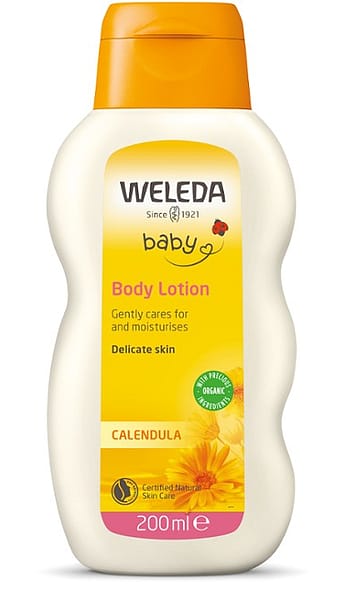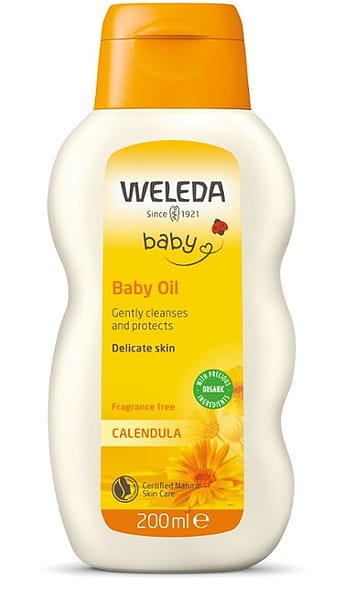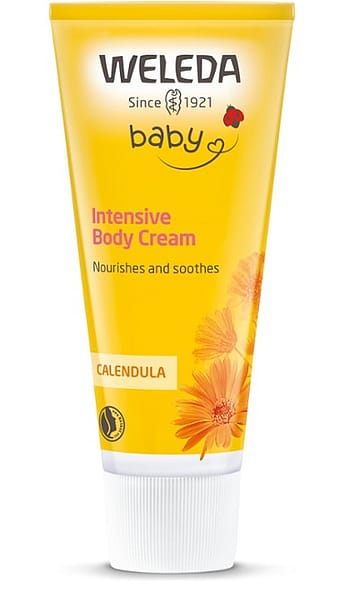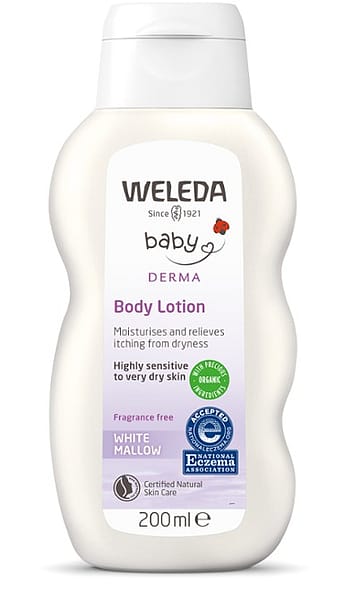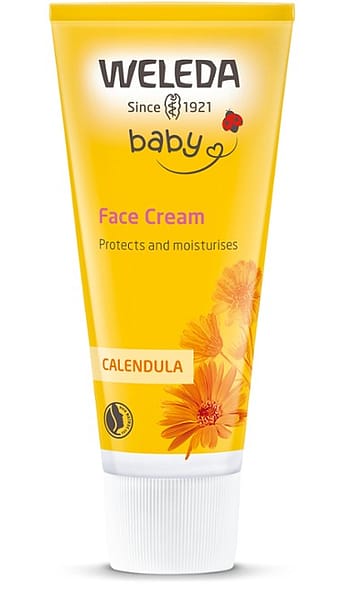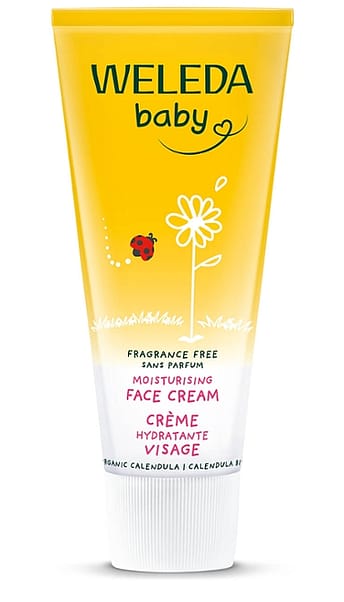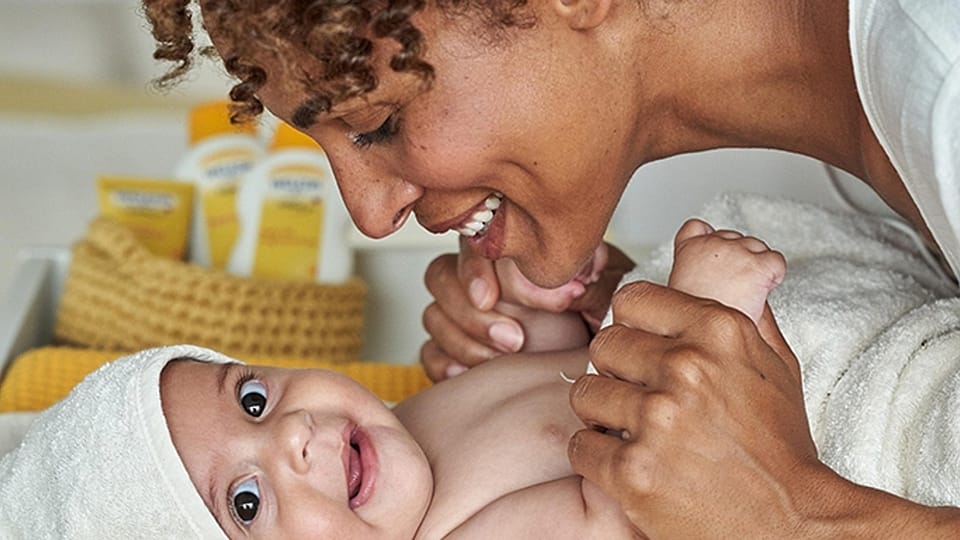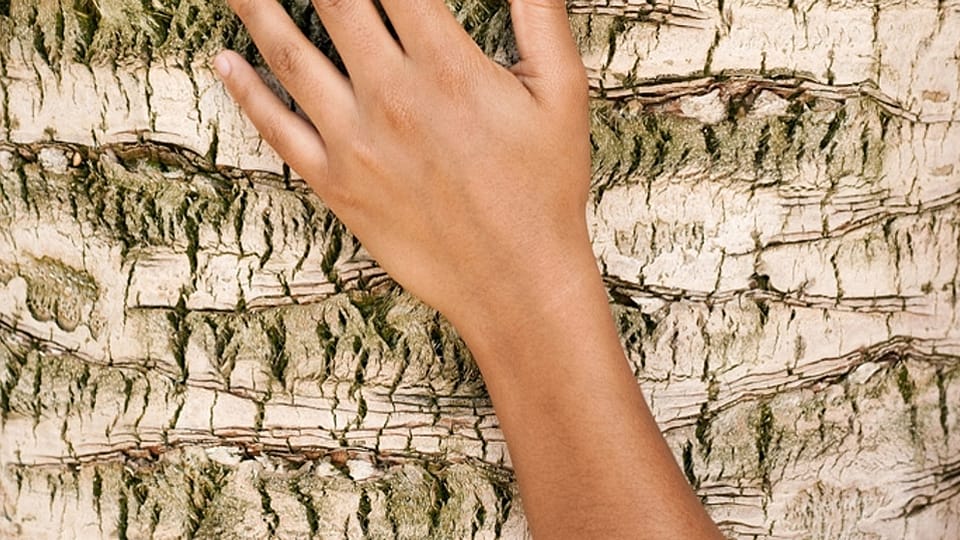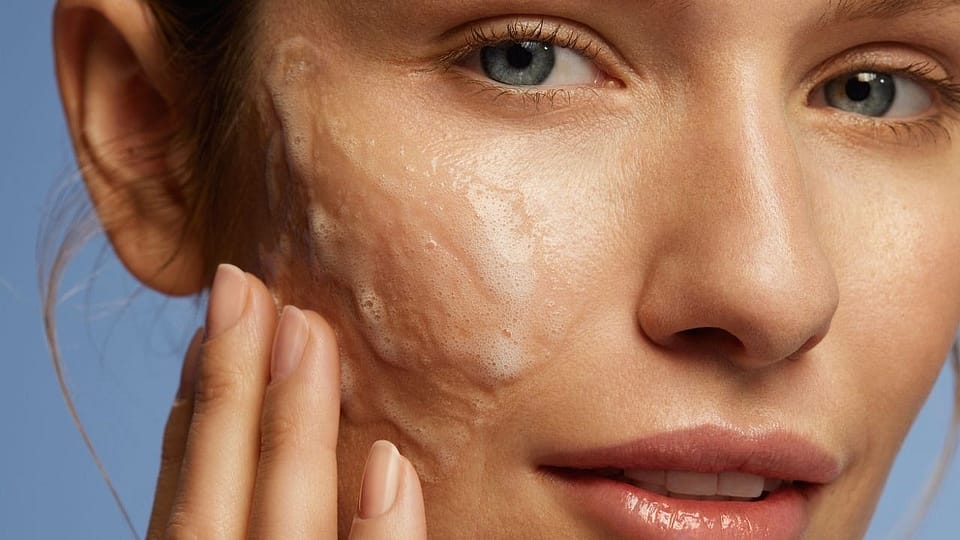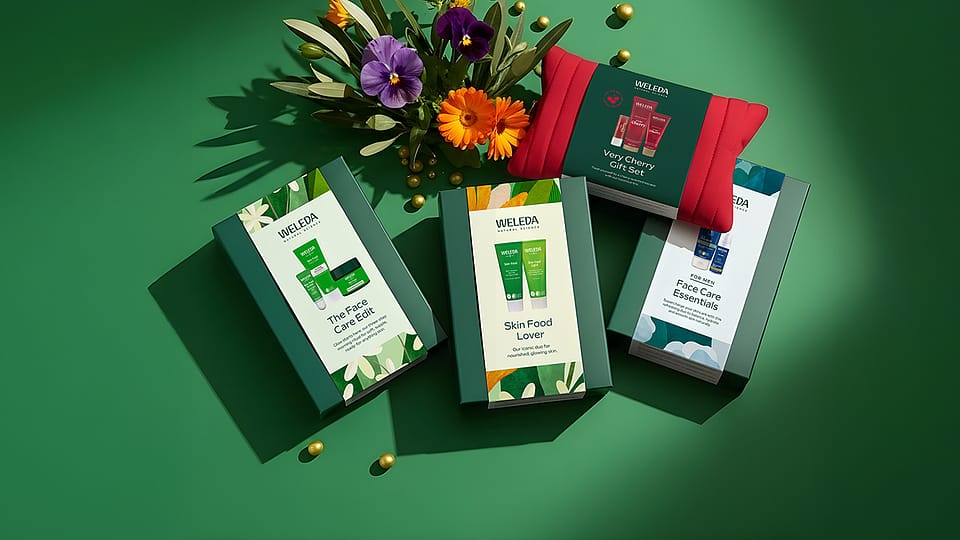How to Choose the Right Moisturiser for Your Baby's Skin
Your baby's delicate skin deserves thoughtful care—a gentle touch that nurtures rather than overwhelms. With so many options lining store shelves, finding the perfect moisturiser for your little one can feel overwhelming. However, understanding your baby's unique needs and the wisdom of natural ingredients can transform this choice from confusing to intuitive.
Understanding Your Baby's Unique Skin
Before selecting any moisturiser, it's essential to understand what makes baby skin different from adult skin. These natural differences guide our choices in providing the most supportive care.
The Special Nature of Baby Skin
Your baby's skin is a marvel of nature—perfectly designed yet still developing:
- Thinner structure: Up to 30% thinner than adult skin, making it more permeable
- Developing barrier function: Still forming its protective capabilities
- Higher water content: More prone to both absorption and water loss
- Neutral pH: Takes time to develop the slightly acidic mantle that protects adult skin
- Sensitive response system: More reactive to environmental factors
These natural characteristics aren't flaws—they're part of your baby's perfect design, allowing for sensory development and adaptation to life outside the womb. However, they do mean that baby skin requires specially formulated care that respects these differences.
Recognising Your Baby's Skin Type
Just like adults, babies can have varying skin types and conditions:
Normal Baby Skin
Most babies have naturally balanced skin that requires simple, gentle maintenance. Look for gentle, light moisturisers for daily care.
Dry Baby Skin
Signs include slight flaking, roughness, or tightness. This common condition often needs richer moisturising support, particularly in winter months or dry climates.
Sensitive or Reactive Skin
May show quick responses to environmental factors, temperature changes, or new products. These babies benefit from ultra-gentle, minimalist formulations.
Eczema-Prone Skin
Characterised by dry, itchy patches, sometimes with slight redness. Requires particularly thoughtful selection of soothing, simple moisturisers.
Observing your baby's skin in different conditions—after bathing, in varying weather, during temperature changes—provides valuable clues about their unique needs and how these might change over time and seasons.
Natural Ingredients That Nurture
Traditional wisdom has identified certain plant-based ingredients that work in remarkable harmony with baby skin. Understanding these natural allies helps you choose moisturisers that truly support your baby's developing skin.
Beneficial Plant Oils for Baby Skin
Nature provides perfect moisturising solutions through gentle plant oils:
Sweet Almond Oil
Rich in vitamins E and B, almond oil has been used for centuries to nourish delicate skin. Its fatty acid profile mirrors some aspects of skin's natural lipids, allowing it to absorb beautifully without feeling heavy. This makes it ideal for regular moisturising and massage.
Calendula
The golden marigold flower offers traditional soothing properties that have made it a staple in baby care across generations. Calendula-infused oils provide gentle support for developing skin, making it especially valuable in products like Weleda Calendula Baby Lotion.
Chamomile
With its gentle calming properties, chamomile has long been treasured in baby care. It offers natural support that helps balance and nurture sensitive skin.
Cocoa Butter
This rich plant butter creates a protective yet breathable layer on the skin's surface, helping to seal in moisture while allowing the skin to function naturally. Its natural stability makes it an excellent choice for baby moisturisers.
Sesame Oil
Traditionally valued for its warming properties, sesame oil offers gentle nourishment that's particularly beneficial during cooler months or for babies who tend toward dryness.
Ingredients to Approach with Caution
While many natural ingredients offer beautiful benefits, some common moisturiser components may not be ideal for baby's developing skin:
Essential Oils
While some gentle essential oils can be appropriate in very low dilutions in baby products, many are too potent for regular use on delicate skin. Products with high concentrations of essential oils are generally best avoided for babies.
Alcohol
Certain forms of alcohol can be drying and potentially irritating to delicate skin. While some plantderived alcohols serve as natural preservatives in tiny amounts, products with high alcohol content aren't ideal for regular baby care.
Synthetic Fragrances
Artificial scents may contain dozens of undisclosed chemicals, some of which may trigger sensitivity in delicate skin. Unscented products or those scented only with gentle natural ingredients often serve babies best.
Mineral Oil
Though common in conventional baby products, mineral oil (a petroleum derivative) creates an occlusive barrier that sits on the skin's surface rather than being metabolised by the body. Plant oils often provide more harmonious support that works with baby's developing skin.
By focusing on simple, nurturing plant ingredients, you support your baby's skin in the most natural way possible.
Different Moisturiser Types for Different Needs
Baby moisturisers come in various formulations, each serving specific purposes in your care routine. Understanding these differences helps you choose the right option for different situations.
Lotions: Everyday Hydration
Lotions blend oils and water to create lighter-weight moisture perfect for:
- Daily all-over moisturising
- Warmer weather
- Normal to slightly dry skin
- Easy application on wiggly babies
Weleda Calendula Baby Lotion offers the perfect balance—light enough for daily use while providing natural nourishment through calendula-infused sweet almond oil.
Creams: Targeted Support
With a thicker consistency than lotions, creams provide:
- Richer moisture for dry areas
- Longer-lasting hydration
- Protection in challenging weather
- Focused care for dry patches
Weleda Calendula Face Cream delivers concentrated moisture that's particularly beneficial for cheeks and exposed areas in winter months.
Oils: Deep Nourishment
Pure plant oils offer special benefits:
- Deep, natural moisture
- Perfect medium for baby massage
- Excellent post-bath hydration
- Support for very dry skin
Weleda Calendula Baby Oil provides pure plant-based nourishment that absorbs beautifully while creating precious moments of connection through touch.
Balms: Protective Barrier
These concentrated formulations serve specific needs:
- Intensive protection
- Support for very dry patches
- Weather protection
- Overnight moisture
Weleda Calendula All Purpose Balm creates a natural shield against harsh environmental conditions while allowing skin to breathe naturally
Choosing for Your Baby's Skin Type
Selecting the perfect moisturiser means considering your baby's unique skin type and needs. Here's how to match natural formulations to different skin conditions.
For Normal Baby Skin
Babies with balanced skin benefit from simple, consistent care that maintains their natural equilibrium:
Best Choices:
- Light, natural lotions for daily care
- Pure plant oils for occasional deeper nourishment
- Minimal ingredient lists that support without overwhelming
Key Ingredients to Look For:
- Sweet almond oil for gentle nourishment
- Calendula for balanced support
- Beeswax for light protection
Weleda Calendula Baby Lotion offers ideal daily care for babies with normal skin, providing just the right amount of natural moisture.
For Dry Baby Skin
Some babies naturally have drier skin or develop dryness in certain conditions. These little ones benefit from richer, more protective formulations:
Best Choices:
- Richer creams or oils for daily use
- Balms for particularly dry areas
- Products that create a breathable protective layer
Key Ingredients to Look For:
- Sesame oil for deeper nourishment
- Cocoa butter for moisture retention
- Beeswax for protective benefits
Weleda Calendula Baby Oil provides excellent support for babies with drier skin, offering deep nourishment without synthetic occlusive agents.
For Sensitive or Reactive Skin
Babies whose skin shows quick responses to environmental factors or new products need extra-gentle care:
Best Choices:
- Ultra-gentle formulations with minimal ingredients
- Unscented or very lightly scented options
- Products specifically designed for sensitive skin
Key Ingredients to Look For:
- White mallow for its traditional soothing properties
- Coconut oil for gentle support
- Borage seed oil for its natural calming effects
Weleda White Mallow Body Lotion offers specially formulated care for babies with sensitive or reactive skin.
For Eczema-Prone Skin
Babies with a tendency toward eczema benefit from specially selected moisturisers that support skin comfort:
Best Choices:
- Rich but gentle moisturisers applied frequently
- Products free from potential irritants
- Formulations that support the skin barrier
Key Ingredients to Look For:
- White mallow for traditional support
- Evening primrose oil for its beneficial fatty acids
- Coconut oil for gentle moisture
Weleda White Mallow Face Cream provides targeted care for facial eczema, while Weleda White Mallow Body Lotion offers whole-body support.
Seasonal Adjustments
Your baby's skin needs may change with the seasons, inviting thoughtful adjustments to your moisturising routine:
Summer Care
- Lighter lotions applied less frequently
- Focus on post-swim moisture replacement
- Attention to heat-prone areas like neck folds
Winter Support
- Richer formulations for protection
- More frequent application
- Special attention to exposed areas like cheeks and hands
Transitional Weather
- Gradual adjustments as seasons change
- Layering different products as needed
- Observation of how skin responds to changing conditions
This seasonal awareness reflects the traditional understanding that we exist in relationship with our environment, not separate from it.
Reading Labels with Confidence
Understanding product labels helps you make informed choices for your baby's delicate skin. Here's how to navigate the sometimes confusing world of ingredient lists and marketing claims.
Decoding Ingredient Lists
Ingredient lists (often labeled as "INCI") reveal what's actually in the product:
Natural Indicators:
- Botanical ingredients listed with both Latin and common names
- Recognisable plant oils and butters
- Natural waxes like beeswax (Cera Alba)
- Short, straightforward lists
Cautionary Signs:
- Long chemical names not clearly identified as plant-derived
- "Fragrance" or "Parfum" without specification
- Petroleum derivatives (like mineral oil, petrolatum)
- Lengthy lists with many synthetic preservatives
Weleda provides both INCI (International Nomenclature of Cosmetic Ingredients) names and common names so you can easily understand what's in our products.
Understanding Certifications
Legitimate certifications help guarantee that "natural" claims are meaningful:
NATRUE Certification
This independent certification ensures:
- Strict criteria for natural and organic ingredients
- Limitations on processing methods
- Absence of synthetic fragrances, colors, and preservatives
- Environmentally responsible practices
All Weleda baby care products carry this rigorous certification, reflecting our uncompromising commitment to true natural formulations.
Looking Beyond Marketing Terms
Some common terms have little regulatory meaning:
"Hypoallergenic" simply means the product is less likely to cause allergic reactions, but doesn't guarantee it won't
"Dermatologist-tested" only indicates that a dermatologist evaluated the product, not that it passed specific standards
"For sensitive skin" has no standardised definition
Instead, look at the actual ingredients and certifications to make truly informed choices.
Introducing New Products Safely
When trying a new moisturiser, a thoughtful approach helps ensure it suits your baby's unique needs.
The Patch Test Approach
Before applying a new product all over your baby's body:
- Apply a small amount behind the ear or on the inner arm
- Wait 24 hours, watching for any signs of irritation
- If no reaction occurs, proceed with normal use
- If redness or irritation appears, discontinue use
This cautious method honors the traditional wisdom of "start low and go slow" when introducing anything new.
Signs of Compatibility
A well-matched moisturiser will:
- Absorb appropriately without excessive greasiness
- Create no redness or irritation
- Leave skin feeling comfortable, not tight or itchy
- Maintain its effects for a reasonable time
Signs to Watch For
Indications that a product may not be ideal include:
- Redness or new dryness appearing after use
- Rough or bumpy skin texture developing
- Baby seeming uncomfortable during or after application
- Effects wearing off very quickly
Remember that true irritation is different from temporary redness from application that fades quickly.
Creating a Moisturising Ritual
Beyond the product itself, how and when you moisturise can enhance the benefits for both skin health and emotional wellbeing.
Timing for Maximum Benefit
Certain moments create optimal conditions for moisturising:
After Bathing
Apply moisturiser within 3 minutes of patting skin dry, when it's still slightly damp. This helps lock in water and maximizes absorption of beneficial ingredients.
Before Outdoor Exposure
Apply protective formulations about 15-30 minutes before going outside in challenging weather, allowing time for absorption.
Before Sleep Evening
application, particularly of richer formulations, provides overnight support when the body's natural repair processes are most active.
The Art of Application
How you apply moisturiser affects both its efficacy and your baby's experience:
Gentle Touch
Use smooth, gentle strokes rather than vigorous rubbing, allowing your baby to enjoy the sensory experience.
Warm Hands
First Take a moment to warm the product between your palms before applying, making the experience more comfortable for your baby.
Massage Approach
For full-body application, consider using gentle massage techniques that enhance circulation while creating a bonding moment.
Attention to Folds
Pay special care to areas where moisture can collect, like neck folds, behind knees, and in elbow creases, ensuring these are moisturised but not left damp.
Consistency and Rhythm
Establishing regular moisturising times creates security for babies while simplifying decisions for parents:
Morning Ritual
A light application after the morning wash or bath helps prepare skin for the day.
Evening Wind-Down
Including moisturising in the bedtime routine creates a soothing transition to sleep while providing overnight support.
Consistent Response to Triggers
Applying after specific exposures (swimming, weather changes, etc.) helps maintain skin balance through changing conditions.
These rhythms reflect the traditional understanding that regularity provides comfort and security for developing children.
Frequently Asked Questions
How often should I moisturise my baby's skin?
For most babies with normal skin, daily moisturising provides sufficient support, ideally after bathing when skin is still slightly damp. Babies with drier skin or those in harsh climates may benefit from twice-daily application. However, every baby is unique—observe your little one's skin response and adjust frequency accordingly. Remember that over-moisturising can be as disruptive as undermoisturising, so finding the right balance for your baby's individual needs is key.
Are natural moisturisers effective for very dry baby skin?
Yes, natural moisturisers can be highly effective for dry baby skin when properly formulated. Plant oils like sesame and sweet almond contain fatty acids that are remarkably compatible with skin's natural structure. Traditional ingredients like cocoa butter and beeswax create breathable protective layers that prevent moisture loss while allowing skin to function naturally. Products like Weleda Calendula Weather Protection Cream combine these natural elements to provide rich support without synthetic occlusive agents, working in harmony with your baby's developing skin.
When should I switch from baby moisturiser to regular moisturiser?
There's no definitive age when this transition should occur. Instead, observe your child's changing skin needs. Most children continue to benefit from gentler formulations throughout early childhood (ages 2-6), particularly if they have sensitive or reactive skin. As school age approaches, you might introduce slightly more diverse formulations, but maintaining natural, gentle options remains beneficial. Weleda offers natural skincare suitable for various ages, allowing for a gradual, needs-based transition rather than an arbitrary age cutoff.
Can I use oils instead of lotions for moisturising my baby?
Pure, natural plant oils make excellent moisturisers for many babies. They offer deep nourishment while creating a beautiful medium for massage and bonding. Oils like sweet almond (found in Weleda Calendula Baby Oil) are particularly beneficial after baths, creating a nurturing ritual that supports both skin health and emotional connection. However, some babies may find pure oils too rich for everyday use, particularly in warmer weather or on naturally oilier skin. Many families find a combination approach works well—oils for deeper moisturising or massage sessions, and lighter lotions for everyday care.
Should I use different moisturisers for face and body on my baby?
While many babies do well with the same gentle moisturiser for both face and body, there are benefits to using specialized formulations for the face. Facial skin is more delicate and exposed to environmental elements, sometimes requiring additional protection. Products like Weleda Calendula Body Lotion or White Mallow Face Cream are specifically formulated for the unique needs of facial skin. However, if your baby has normal skin with no specific concerns, a single, highquality natural moisturiser like Weleda Calendula Baby Lotion can work beautifully for both face and body, simplifying your care routine.
Embracing Natural Care
Choosing moisturisers for your baby is more than a practical decision—it's an expression of care that nurtures both physical wellbeing and emotional connection. By selecting products that work in harmony with your baby's developing skin, you create the conditions for natural balance and health to flourish.
Remember that your baby's needs are unique and may change with seasons, development stages, and environmental factors. The most nurturing approach combines thoughtful product selection with attentive observation, adjusting your care as your baby's skin tells its own story.
At Weleda, our century of experience creating certified natural skincare has taught us that supporting —rather than overwhelming—your baby's inherent wisdom creates the most harmonious results. When we provide gentle care with plant-based formulations that respect natural development, we honor both the remarkable capabilities of this living organ and the precious beings it protects.
May your journey of caring for your baby's skin be filled with moments of connection, discovery, and joy—a natural expression of the deep bond you share.
For more specific guidance about incorporating Weleda's certified natural moisturisers into your baby care routine, explore our complete Calendula Baby Care and White Mallow Baby Care collections, designed to work in harmony with your baby's delicate skin





